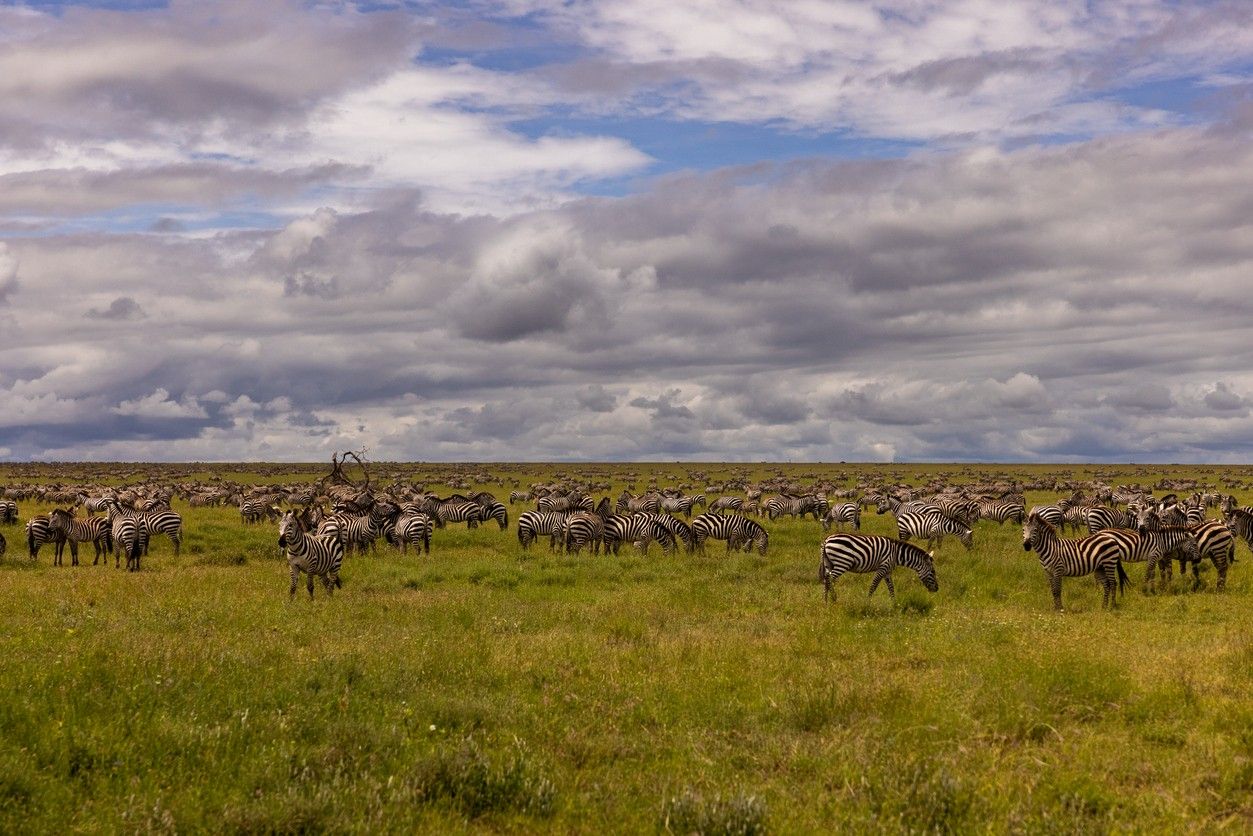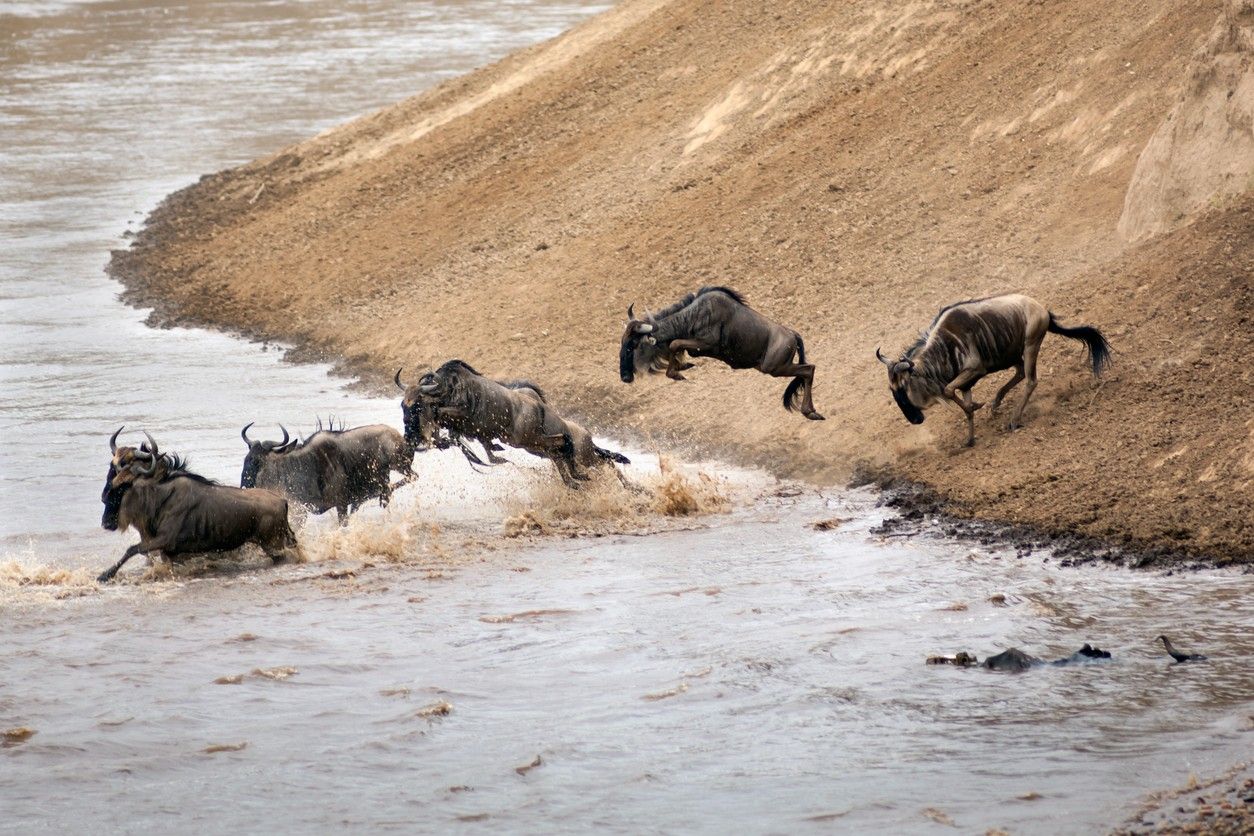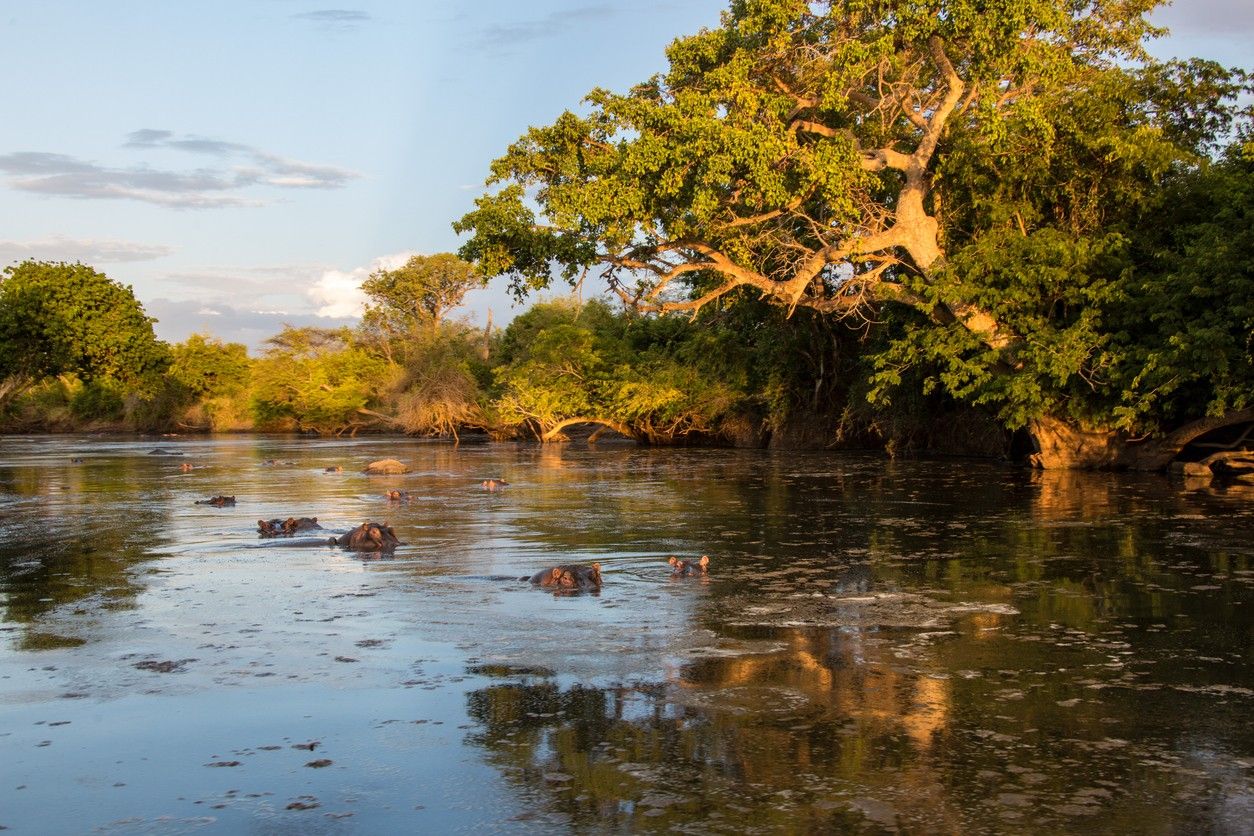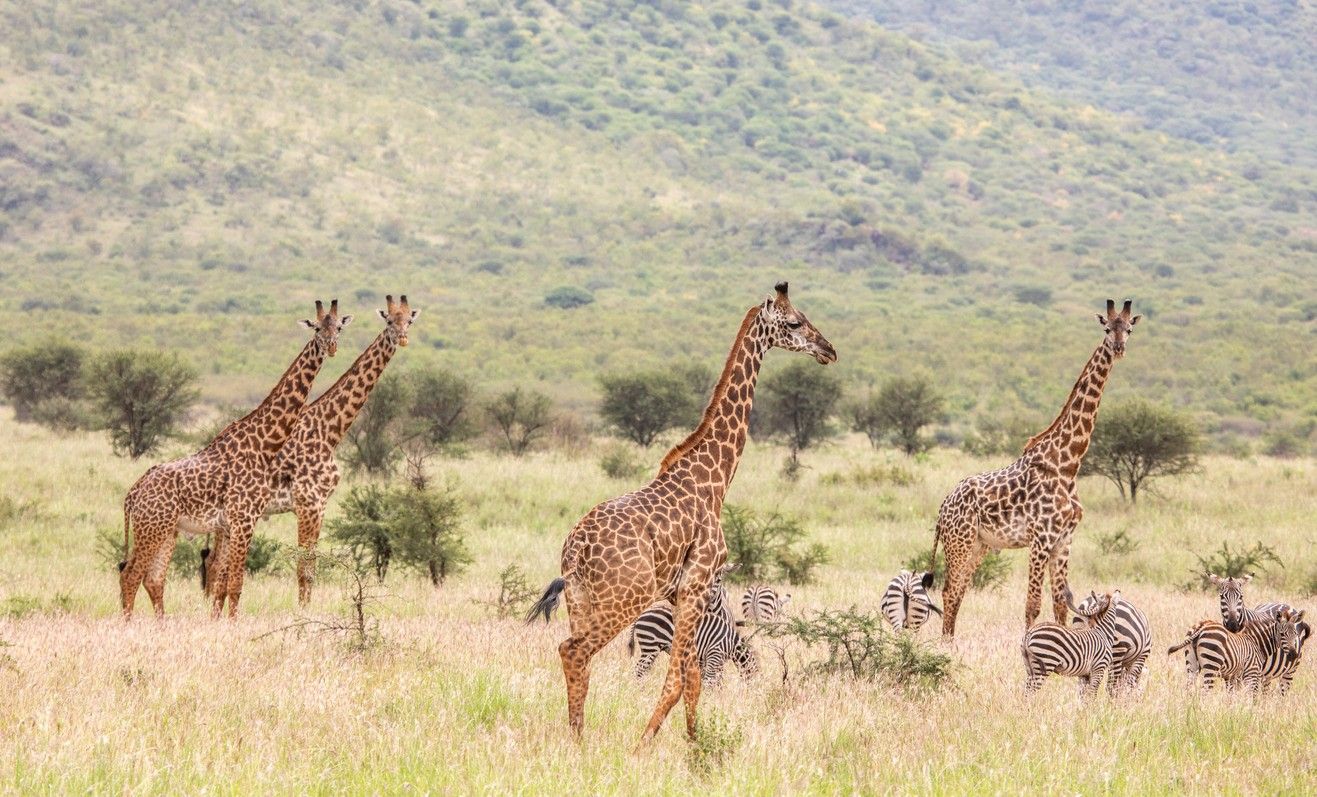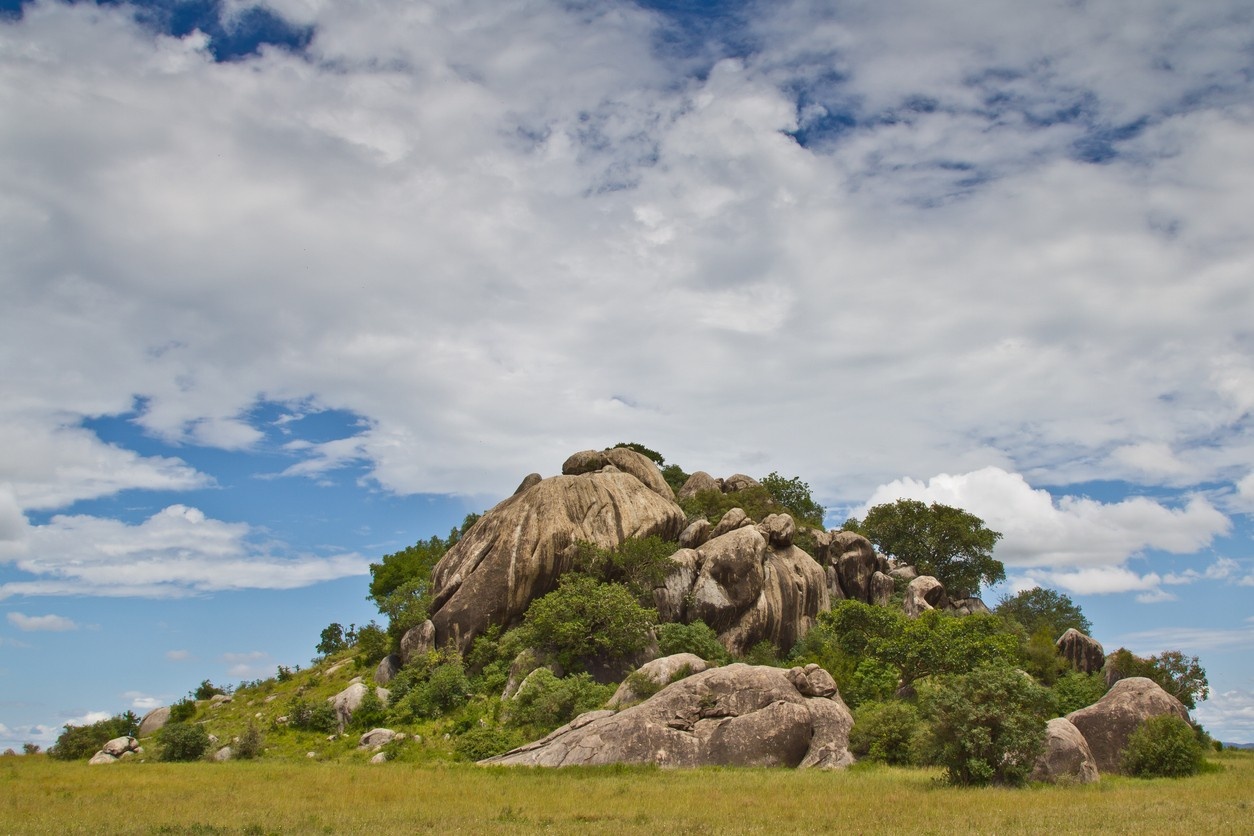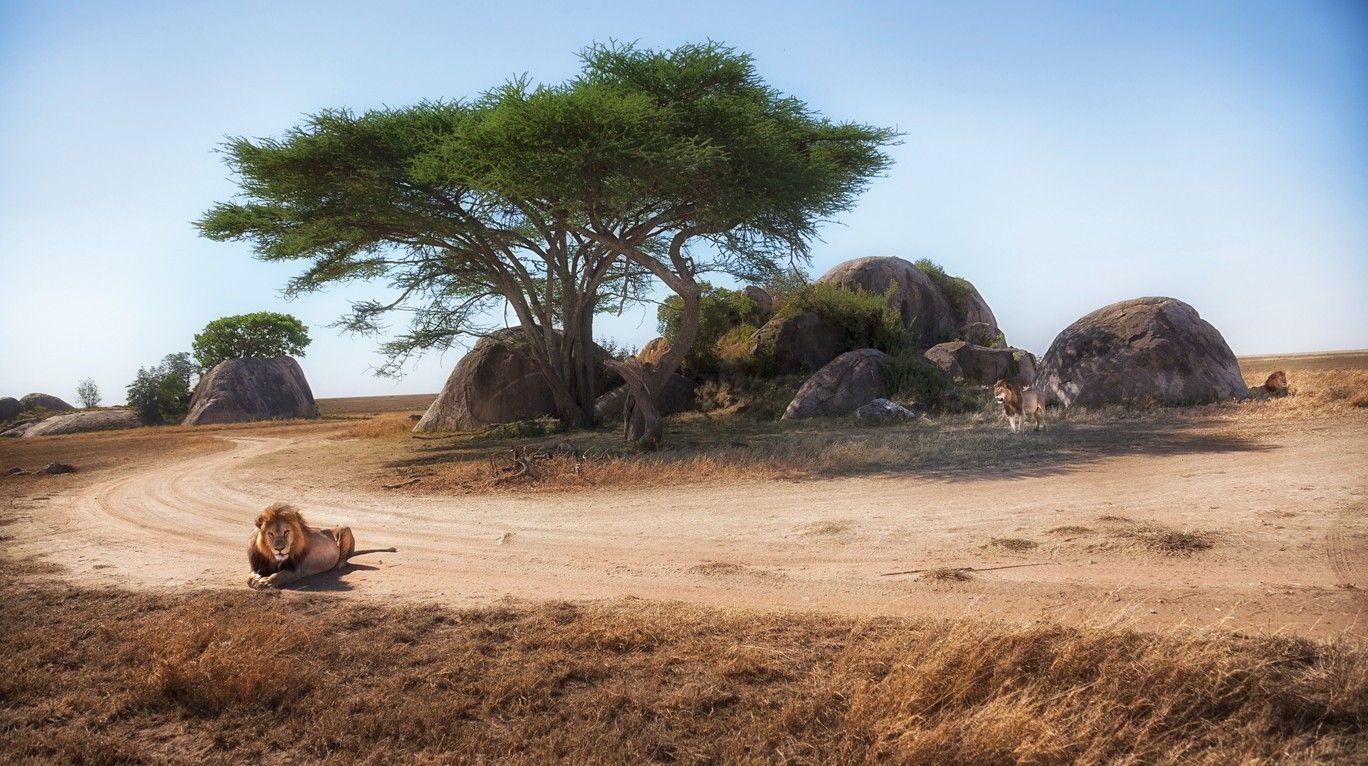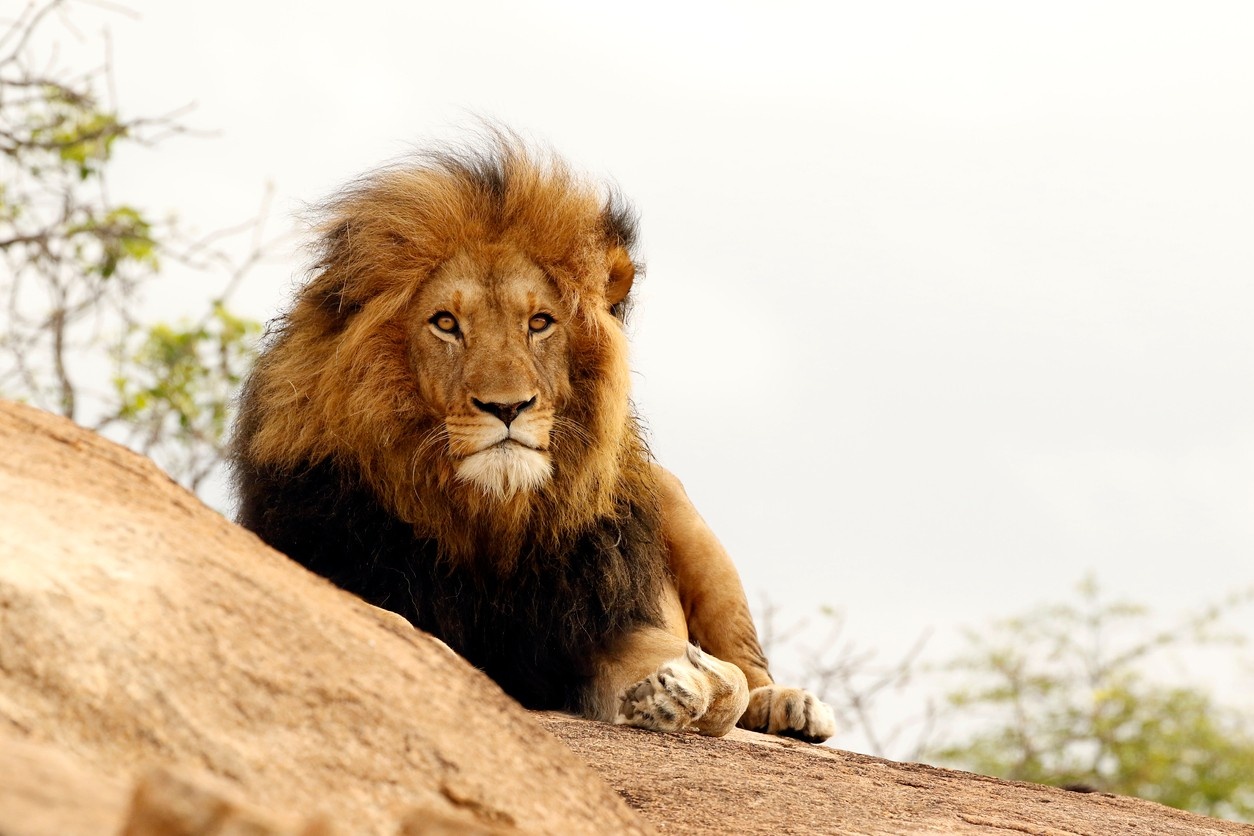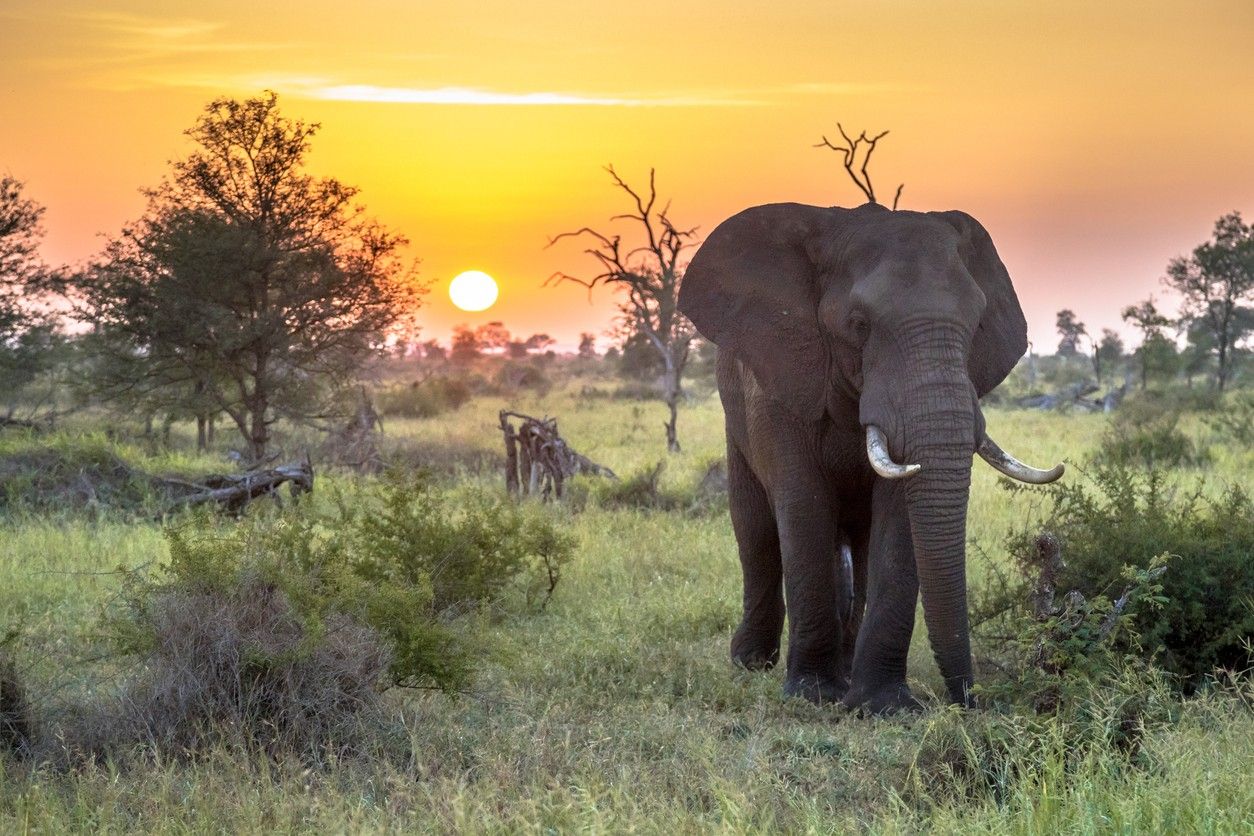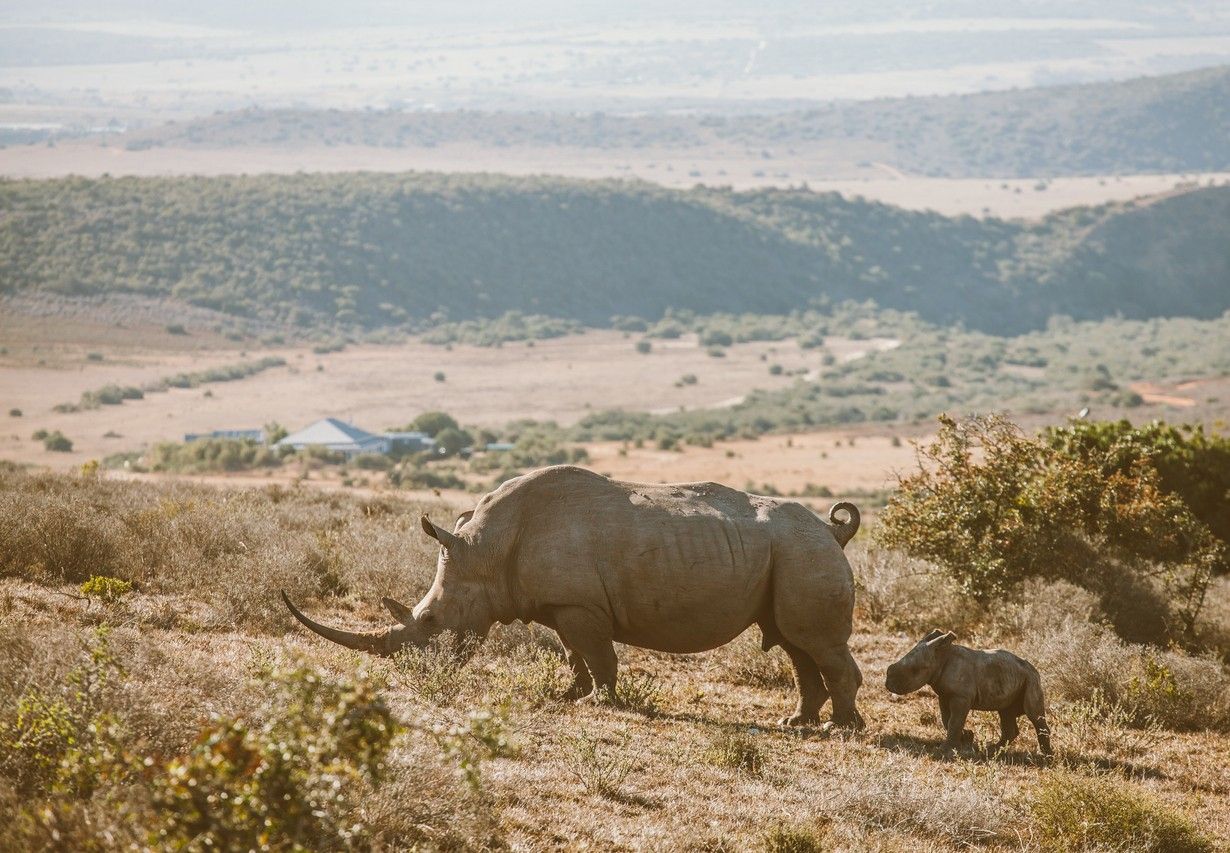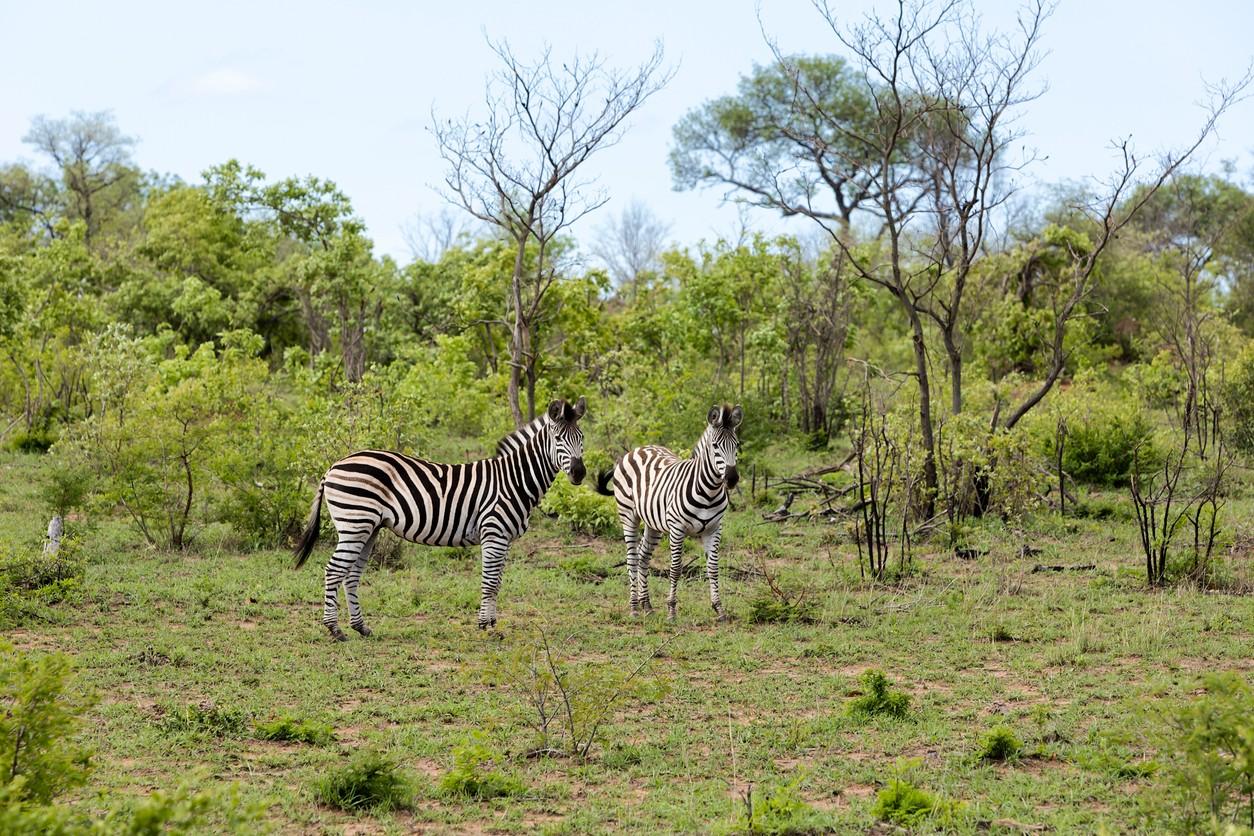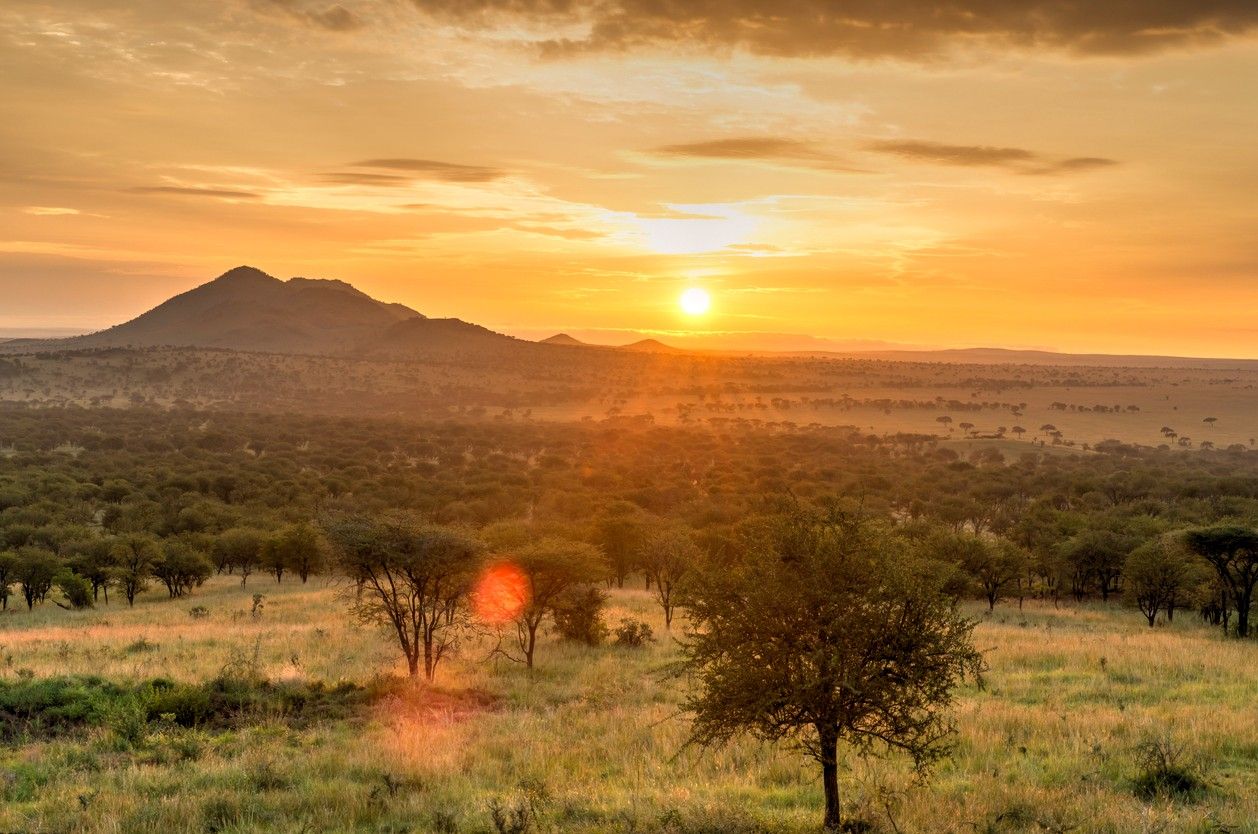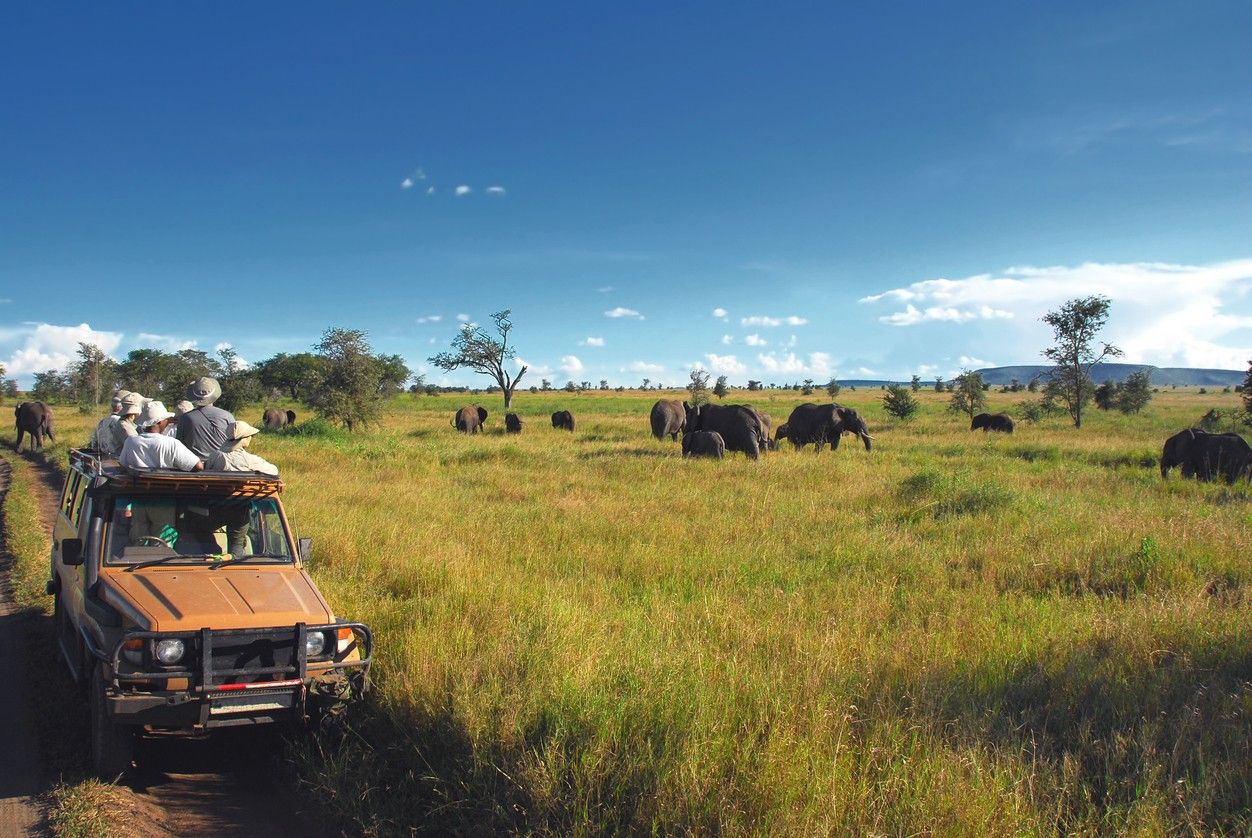Serengeti National Park
Serengeti National Park is Tanzania's oldest and most renowned national park. Situated in the northwest of the country, it spans a vast 14,763 square kilometres. The Serengeti is renowned globally for its breathtaking natural beauty and unparalleled wildlife viewing opportunities. Visitors flock here to witness one of the world's most spectacular natural events – the great migration of wildebeest and zebra. However, there is far more to this iconic destination than just the migration. The park boasts diverse landscapes, from grassy plains to woodlands and rocky outcrops, sustaining an incredible array of flora and fauna. With its awe-inspiring vistas, abundant wildlife, and rich cultural heritage, the Serengeti is a true gem of East Africa that beckons nature enthusiasts from around the globe.
The Landscapes of Serengeti
The Serengeti National Park is renowned for its diverse and breathtaking landscapes that stretch as far as the eye can see. From the vast, golden grasslands of the southern plains to the undulating woodlands and rocky outcrops of the north, this iconic destination offers a kaleidoscope of natural wonders. Each region boasts its own unique beauty and ecological significance, sustaining an incredible array of flora and fauna that call this wilderness home.
The Great Migration: A Breathtaking Spectacle
The great migration is undoubtedly one of the most awe-inspiring natural phenomena on Earth. Every year, between January and March, over a million wildebeest give birth to their young on the southern plains of the Serengeti. This incredible event sets the stage for the migration, as the herds must soon depart in search of fresh grazing grounds to sustain the newborn calves and their mothers. As the dry season approaches in April and May, the wildebeest, joined by hundreds of thousands of zebras, gazelles, and other herbivores, begin their epic trek northward. The sheer scale of this migration is almost incomprehensible, with vast columns of animals stretching as far as the eye can see, creating a living, undulating river across the Serengeti's endless plains. The journey is fraught with peril, as the herds must navigate treacherous river crossings, evade the ever-present threat of predators, and endure the harsh elements of the African wilderness. Yet, driven by an ancient instinct etched into their very beings, the wildebeest press on, their thundering hooves shaking the earth beneath them.
One of the most remarkable aspects of the great migration is its cyclical nature. After reaching the lush grazing grounds of the Masai Mara in Kenya, the herds will eventually turn around and begin the long trek back to the Serengeti, arriving just in time for the next calving season. This incredible cycle has been repeated for centuries, a testament to the resilience and adaptability of these magnificent creatures. Witnessing the great migration firsthand is an experience that defies description. The sheer magnitude of the herds, the cacophony of their calls, and the primal energy that seems to emanate from their very beings is a humbling and awe-inspiring sight. It is a true marvel of nature, a reminder of the incredible forces that shape and sustain life on our planet.
The Grumeti River Crossings
One of the most dramatic and perilous stages of the great migration is the crossing of the Grumeti River. As the wildebeest herds make their way northward, they encounter this formidable obstacle, a crocodile-infested waterway that stands between them and their destination. The tension builds as thousands upon thousands of wildebeest gather on the riverbanks, their instincts compelling them forward, yet the inherent danger of the crossing causes them to hesitate. The air is thick with anticipation, as the animals jostle and call to one another, seemingly weighing the risks. Finally, driven by an inexplicable force, a few brave individuals take the plunge, leaping into the churning waters and setting off a chain reaction that propels the rest of the herd to follow. It is a harrowing scene, as the animals battle against the strong currents, their desperation palpable. Opportunistic crocodiles lie in wait, their powerful jaws poised to strike at any moment, dragging unsuspecting wildebeest into the depths. The crossing becomes a frantic race for survival, with the fortunate ones making it safely to the opposite bank, while others tragically fall prey to the river's ruthless inhabitants. The Grumeti River crossing is a stark reminder of the harsh realities of the natural world, a display of raw power and the indomitable will to survive that drives the great migration. It is a spectacle that leaves even the most seasoned safari-goers in awe, a testament to the incredible resilience of these animals and the relentless cycle of life and death that plays out on the Serengeti's plains.
The Kopjes — Ancient Rock Formations
Amidst the vast, undulating plains of the Serengeti, the kopjes – ancient granite outcrops – rise like sentinels from the earth, adding depth and dimension to the landscape. These rocky formations, sculpted by millions of years of erosion, take on a variety of shapes and sizes, from towering monoliths to whimsical clusters that resemble the ruins of long-forgotten citadels. The kopjes are more than just aesthetic marvels; they play a vital role in the Serengeti's ecosystem, serving as refuges and vantage points for the park's predators. Lions, leopards, and cheetahs can often be spotted lounging atop these rocky outcrops, their keen eyes scanning the surrounding plains for potential prey. These massive rock formations loom overhead, their weathered surfaces etched with intricate patterns and textures that hint at their ancient origins. Some kopjes are adorned with lush vegetation, their crevices and fissures providing shelter for a diverse array of plant and animal life.
Climbing to the summit of a kopje offers a breathtaking panoramic view of the Serengeti, revealing the vastness and beauty of this iconic wilderness. From this vantage point, one can observe the movements of the great herds, the cautious stalking of predators, and the ever-changing tapestry of life that unfolds on the plains below. The kopjes also hold a significant cultural significance for the Maasai people, who have long revered these rock formations as sacred sites. Many kopjes bear the markings of ancient rock art, offering a glimpse into the rich cultural heritage of this region.
The Serengeti Woodlands
While the vast, open plains are Serengeti's most iconic landscape, the park's northern reaches offer a different but equally captivating scenery. The Serengeti Woodlands, a region characterised by a mosaic of grasslands dotted with acacia trees and thick riverine forests lining the winding waterways, provides a stark contrast to the sweeping savannahs of the south. This diverse habitat supports a rich array of wildlife, including elephant herds that browse on the acacia leaves, their massive silhouettes casting long shadows across the landscape. The woodlands are also home to a wealth of bird species, from the regal ground hornbills to the vibrant lilac-breasted rollers that flit through the branches, their brilliant plumage a riot of colour against the verdant foliage. Exploring the Serengeti Woodlands reveals a more intimate and secluded side of the park, where animals can often be observed at closer quarters. The dense vegetation provides a welcome respite from the relentless sun, and the winding rivers and streams offer a source of life-giving water that attracts a diverse array of creatures.
One of the highlights of the woodlands is the opportunity to witness the intricate interactions between different species. Troops of baboons and vervet monkeys can be seen foraging among the trees, their playful antics providing a delightful spectacle. Meanwhile, leopards prowl through the undergrowth, their spotted coats perfectly camouflaged amidst the dappled light and shadows. For avid birders, the Serengeti Woodlands are a paradise. From the elusive and sought-after Pel's fishing owl to the vibrant bee-eaters and rollers, the diversity of avian life in this region is truly remarkable. The woodlands also provide a vital stopover for migratory species, with vast flocks of birds descending upon the area during their annual journeys.
Serengeti's Flora and Fauna
The Serengeti is an absolute paradise for nature enthusiasts, teeming with an astonishing diversity of plant and animal life. From the iconic "Big Five" to the massive herds of wildebeest and zebra that undertake the great migration, this park is a living, breathing tapestry of Africa's most magnificent creatures. Predators and prey alike coexist in a delicate balance, their intricate behaviours and interactions a testament to the resilience and adaptability of life in this extraordinary wilderness.
The "Big Five" and Other Iconic Species — While the great migration is undoubtedly Serengeti's most famous attraction, the park is an absolute paradise for wildlife enthusiasts throughout the year. Home to the "Big Five" – lion, leopard, elephant, buffalo, and rhino – the Serengeti offers unparalleled opportunities to spot these iconic African species in their natural habitats. Lions can be observed lounging in the shade of kopjes or stalking their prey on the open plains, while leopards are often spotted draped over tree branches or stalking through the woodlands. Elephant herds roam the park, their massive silhouettes casting long shadows across the savannahs, while buffalo form formidable herds that graze the grassy expanses. The endangered black rhinoceros, once nearly extinct in the Serengeti, has been successfully reintroduced and can be spotted in certain regions of the park.
Herbivores and Grazers — Beyond the "Big Five," the Serengeti is teeming with a dizzying array of herbivores and grazers that form the backbone of the ecosystem. Massive herds of wildebeest, zebra, and gazelle graze the endless plains, their movements dictated by the availability of fresh grazing grounds. Giraffes browse on the acacia trees, their long necks allowing them to reach the highest leaves, while hippos wallow in the rivers and waterholes, their bulky forms providing a stark contrast to the slender antelope that gather at the water's edge. The Serengeti is also home to numerous smaller species, such as the comical warthog, the fleet-footed dik-dik, and the ever-present rock hyrax, adding to the park's rich tapestry of wildlife.
Predators and Scavengers — With such an abundance of prey species, the Serengeti is a haven for predators and scavengers. Cheetahs, the fastest land animals on the planet, can be spotted streaking across the plains in pursuit of their next meal. Hyenas, both spotted and striped, roam the Serengeti in formidable clans, their haunting calls echoing through the night as they scavenge for scraps or launch bold attacks on larger prey. Jackals, with their distinctive black-backed coats, are ever-present, trailing the larger predators and herds in hopes of snatching a meal. Even the regal secretary bird, with its striking quill-like crest, is a predator in its own right, using its powerful legs to strike and kill snakes and other small prey. From the top predators to the opportunistic scavengers, the Serengeti's food web is a complex and fascinating web of life and death.
Avian Diversity — The Serengeti is not just a haven for mammals; it is also a birdwatcher's paradise. With over 500 species of birds recorded within the park's boundaries, the Serengeti offers an incredible diversity of avian life. From the iconic secretary bird and kori bustard, two of the world's heaviest flying birds, to the vibrant rollers, bee-eaters, and starlings that flit through the woodlands, the park's varied habitats support a rich array of feathered residents. Raptors like the martial eagle and bateleur soar overhead, scanning the plains for their next prey, while storks and cranes frequent the wetlands and waterholes. Migratory species, such as the Eurasian bee-eater and the white stork, add to the park's seasonal diversity, arriving in their thousands to take advantage of the abundant resources. Whether you're a dedicated birder or simply appreciate the beauty and diversity of avian life, the Serengeti is sure to delight with its feathered wonders.
Serengeti's Cultural Heritage and Conservation Efforts
While the Serengeti is renowned for its natural splendour, it is also a region steeped in rich cultural heritage and ongoing conservation efforts. The park's landscapes are intertwined with the traditions of the semi-nomadic Maasai people, whose way of life has coexisted harmoniously with the land for centuries. Simultaneously, dedicated initiatives work tirelessly to protect this fragile ecosystem, ensuring that the Serengeti's diverse flora and fauna thrive for generations to come.
The Maasai People
The Serengeti is not merely a wildlife haven; it is also a region steeped in cultural heritage and centuries-old traditions. The park is situated within the traditional lands of the Maasai people, a semi-nomadic tribe renowned for their vibrant dress, intricate beadwork, and deep connection to the land. For centuries, the Maasai have lived in harmony with the Serengeti's wildlife, their pastoralist way of life coexisting with the natural rhythms of the ecosystem. The Maasai are an indigenous community that has inhabited the vast plains of East Africa for over five centuries, their origins tracing back to the Nile Valley region. Traditionally, the Maasai were a nomadic people, following the seasonal rains and migrating with their cattle herds in search of fresh grazing grounds. This nomadic lifestyle was intrinsically linked to the health and well-being of their livestock, which formed the cornerstone of their culture and economy.
One of the most distinctive aspects of the Maasai culture is their traditional attire. Both men and women adorn themselves in vibrant shades of red, adorned with intricate beadwork and jewellery. The colours and patterns of their dress hold deep symbolic meaning, with different shades and designs representing various stages of life, social status, and cultural significance. The Maasai are renowned for their intricate beadwork, which is not only a form of adornment but also a means of storytelling and cultural expression. Skilled craftsmen and women spend countless hours meticulously crafting intricate designs and patterns, each bead representing a different aspect of their mythology, history, or personal experiences.
Despite the encroachment of modern life, the Maasai have fiercely maintained their traditional way of life. Their semi-nomadic existence is still centred around their cattle herds, with the roles and responsibilities within the community divided according to age and gender. Men are primarily responsible for the care and protection of the livestock, while women play a vital role in constructing and maintaining the traditional bomas (homesteads) and caring for the children. The Maasai have a deep spiritual connection to their land and the natural world around them. Their traditional beliefs and practices revolve around the preservation of their environment and the harmonious coexistence with the wildlife that shares their ancestral territories. This symbiotic relationship with nature has been a cornerstone of their culture for generations, and it is this reverence for the land that has allowed the Maasai to thrive in the harsh conditions of the Serengeti and its surrounding regions.
Conservation Efforts
The Serengeti is not only a natural wonder but also a prime example of successful conservation efforts. Over the years, various initiatives have been implemented to protect the park's delicate ecosystems and ensure the long-term survival of its diverse wildlife. Anti-poaching patrols, conducted by dedicated rangers, work tirelessly to combat the illegal hunting and trafficking of animals, while programs like the Tanzania National Parks Authority (TANAPA) and the Frankfurt Zoological Society (FZS) focus on habitat preservation, wildlife monitoring, and community-based conservation projects. One of the most significant conservation efforts in the One of the most significant conservation efforts in the Serengeti is the establishment of wildlife corridors. These designated routes allow animals to migrate freely between the park and neighbouring protected areas, ensuring genetic diversity and preventing habitat fragmentation. The Serengeti-Ngorongoro ecosystem, for instance, is connected via the Loliondo Game Controlled Area, enabling the great migration to continue its ancient cycle unimpeded.
Community-based conservation initiatives have also played a crucial role in preserving the Serengeti's natural heritage. Programs like the Grumeti Fund and the Singita Grumeti Fund work closely with local communities, providing education, healthcare, and sustainable income opportunities in exchange for their support in protecting the park's resources. By actively involving the communities that live alongside the Serengeti, these initiatives foster a sense of ownership and responsibility, ensuring that conservation efforts are not only effective but also sustainable in the long run. Despite the challenges posed by climate change, human encroachment, and other threats, the Serengeti remains a shining example of successful conservation efforts. However, the work is far from over, and ongoing support and vigilance are essential to safeguard this natural wonder for generations to come.
Planning Your Visit to Serengeti National Park
Best Times to Visit — The Serengeti is a year-round destination, with each season offering its unique attractions and experiences. The dry season, from June to October, is widely considered the best time for wildlife viewing. As the grasses wither and water sources dwindle, animals congregate around the remaining waterholes, making them easier to spot. This period also coincides with the great migration, as the wildebeest herds traverse the Serengeti in search of fresh grazing grounds. The wet season, from November to May, offers its charms. The lush, green landscapes come alive with newborn animals, and birding opportunities abound as migratory species return to the area. Additionally, the rains often lead to dramatic thunderstorms and beautiful sunsets that paint the skies in vivid hues.
Getting to the Serengeti — The Serengeti is accessible via several entry points, each offering a unique perspective on the park. The most common gateway is the Naabi Hill Gate, located near the town of Arusha. From here, visitors can embark on game drives through the central and eastern regions of the Serengeti. Alternatively, the Seronera Valley is a prime entry point for those seeking to witness the great migration in action, while the western corridor, accessed via the Ikoma Gate, offers a more secluded and off-the-beaten-path experience. Regardless of your chosen entry point, it's crucial to plan your journey carefully, as the Serengeti is a remote destination with limited infrastructure. Many visitors opt for guided safaris or package tours, which handle all the logistics and provide knowledgeable guides to enhance the experience.
Accommodation Options — The Serengeti offers a range of accommodation options to suit various budgets and preferences. For those seeking an authentic and immersive experience, camping is a popular choice. The park has several designated campsites, some of which offer basic amenities like showers and toilets. Alternatively, mobile tented camps provide a more luxurious camping experience, with spacious tents equipped with comfortable beds, en-suite bathrooms, and even private verandas overlooking the wilderness. For those who prefer a more permanent structure, the Serengeti boasts several lodges and eco-camps scattered throughout the park. These range from rustic yet comfortable lodges to lavish, all-inclusive resorts complete with spas, fine dining, and top-notch amenities.
Safari Activities — While game drives are the quintessential Serengeti experience, the park offers a variety of other activities to enhance your safari adventure. Guided walking safaris provide an up-close and personal encounter with the wilderness, allowing you to explore the landscapes on foot and learn about the intricate details of the ecosystem from knowledgeable guides. For a unique perspective, hot air balloon safaris offer a breathtaking aerial view of the Serengeti, providing a bird's-eye vantage point of the vast herds and stunning landscapes. Alternatively, cultural experiences like visiting Maasai villages or attending traditional dance performances offer insights into the rich heritage of the region.
Responsible Tourism in the Serengeti — As a world-renowned natural wonder, the Serengeti requires a delicate balance between tourism and conservation. Responsible tourism practices are crucial to ensure the long-term preservation of this fragile ecosystem and the protection of its inhabitants. Visitors are encouraged to follow park regulations, such as staying on designated paths, maintaining a respectful distance from wildlife, and adhering to strict noise and litter guidelines. Additionally, supporting eco-friendly accommodations and tour operators that prioritise sustainable practices and community involvement can help minimise the environmental impact of tourism. By embracing responsible tourism, visitors can play an active role in safeguarding the Serengeti's natural heritage for generations to come.
Related articles

Let us know you agree to cookies
We use marketing, analytical and functional cookies as well as similar technologies to give you the best experience. Third parties, including social media platforms, often place tracking cookies on our site to show you personalised adverts outside of our website.
We store your cookie preferences for two years and you can edit your preferences via ‘manage cookies’ or through the cookie policy at the bottom of every page. For more information, please see our cookie policy.

